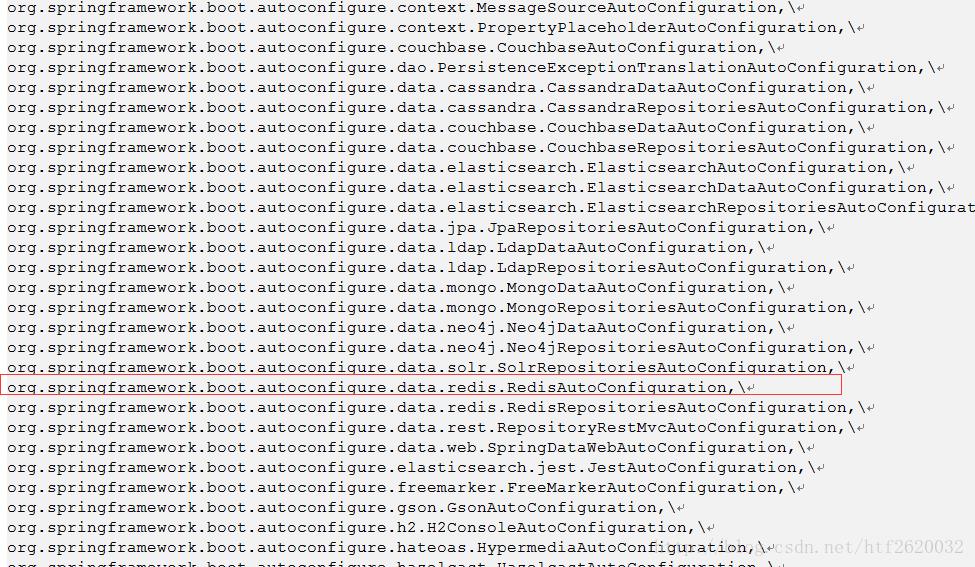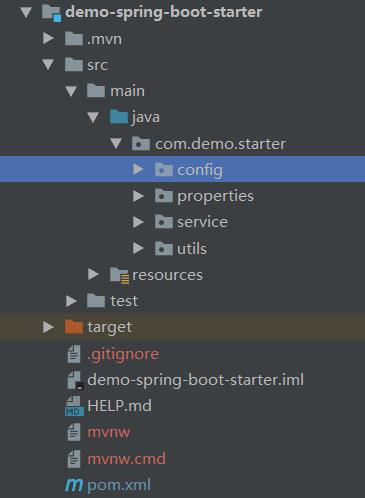SpringBoot的核心就是自动配置,而支持自动配置的是一个个starter项目。除了官方已有的starter,用户自己也可以根据规则自定义自己的starter项目。
自定义starter条件
自动化配置需满足以下条件:
- 根据条件检查classpath下对应的类,也就是说需要提供对应可检查的类;
- 当满足条件时能够生成定义的Bean,并注册到容器中去;
- 能够自动配置项目所需要的配置;
自定义spring boot starter
这里通过maven项目管理工具进行starter的创建。首先我们需要创建一个简单的maven项目。这里我们以集成某短信服务为例,来创建一个项目。
创建maven项目
创建一个简单的maven项目,具体步骤省略。可通过intellj idea等IDE进行创建,也可通过maven命令进行创建。
目录结构如下:
.
├── pom.xml
├── spring-boot-starter-msg.iml
└── src
├── main
└── test在pom.xml中引入SpringBoot自动化配置依赖spring-boot-autoconfigure:
<dependency>
<groupId>org.springframework.boot</groupId>
<artifactId>spring-boot-autoconfigure</artifactId>
<version>2.1.5.RELEASE</version>
</dependency>定义Service服务类
定义Service服务类,有两个作用,一个为引入的项目本省的功能性服务,另外一个用来springboot自动配置时的判断依据。
这里定义一个MsgService的类。
package com.secbro2.msg;
import com.secbro2.utils.HttpClientUtils;
public class MsgService {
/**
* 访问发送短信的url地址
*/
private String url;
/**
* 短信服务商提供的请求keyId
*/
private String accessKeyId;
/**
* 短信服务商提供的KeySecret
*/
private String accessKeySecret;
public MsgService(String url, String accessKeyId, String accessKeySecret) {
this.url = url;
this.accessKeyId = accessKeyId;
this.accessKeySecret = accessKeySecret;
}
public int sendMsg(String msg) {
// 调用http服务并发送消息,返回结果
return HttpClientUtils.sendMsg(url, accessKeyId, accessKeySecret, msg);
}
// 省略getter/setter方法
}
其中MsgService用到了一个工具类HttpClientUtils。在HttpClientUtils中只简单打印了请求的参数信息。
package com.secbro2.utils;
public class HttpClientUtils {
public static int sendMsg(String url, String accessKeyId, String accessKeySecret, String msg) {
//TODO 调用指定url进行请求的业务逻辑
System.out.println("Http请求,url=" + url + ";accessKeyId=" + accessKeyId + ";accessKeySecret=" + accessKeySecret + ";msg=" + msg);
return 0;
}
}定义配置类
定义MsgProperties配置类,用于封装application.properties或application.yml中的基础配置。这里关于短信发送的配置前缀统一采用msg。
@ConfigurationProperties(prefix = "msg")
public class MsgProperties {
/**
* 访问发送短信的url地址
*/
private String url;
/**
* 短信服务商提供的请求keyId
*/
private String accessKeyId;
/**
* 短信服务商提供的KeySecret
*/
private String accessKeySecret;
// 其他参数定义
// 省略getter/setter方法
}通过@ConfigurationProperties注解来进行对应的属性的装配。
创建自动化配置类
自动配置类就是一个普通的java类,通过不同的注解来对其赋予不同的功能。其中最核心的当然是@Configuration注解。
@Configuration
@ConditionalOnClass(MsgService.class)
@EnableConfigurationProperties(MsgProperties.class)
public class MsgAutoConfiguration {
/**
* 注入属性配置类
*/
@Resource
private MsgProperties msgProperties;
@Bean
@ConditionalOnMissingBean(MsgService.class)
@ConditionalOnProperty(prefix = "msg", value = "enabled", havingValue = "true")
public MsgService msgService() {
MsgService msgService = new MsgService(msgProperties.getUrl(), msgProperties.getAccessKeyId(),
msgProperties.getAccessKeySecret());
// 如果提供了其他set方法,在此也可以调用对应方法对其进行相应的设置或初始化。
return msgService;
}
}MsgAutoConfiguration类上的注解,@Configuration用来声明该类为一个配置类;@ConditionalOnClass注解说明只有当MsgService类存在于classpath中时才会进行相应的实例化;@EnableConfigurationProperties将application.properties中对应的属性配置设置于MsgProperties对象中;
msgService方法上的注解,@Bean表明该方法实例化的对象会被加载到容器当中;@ConditionalOnMissingBean指明当容器中不存在MsgService的对象时再进行实例化;@ConditionalOnProperty指定了配置文件中msg.enabled=true时才进行相应的实例化。
添加spring.factories
当所有的基础代码和自动配置类都准备完成,就需要对其进行注册。也就是我们熟悉的META-INF/spring.factories配置文件了。当然,这个需要在自己的项目中进行创建。
org.springframework.boot.autoconfigure.EnableAutoConfiguration=\\
com.secbro2.msg.MsgAutoConfiguration在spring.factories配置文件中注册MsgAutoConfiguration类。如果有多个自动配置类,用逗号分隔换行即可。
至此,一个基于Spring Boot的自动配置starter便完成了。使用“maven:install”将其打包到本地maven仓库或上传至私服。其他项目便可以通过maven依赖使用。
starter项目使用
在其他项目中,通过以下依赖引入该依赖。
<dependency>
<groupId>com.secbro2</groupId>
<artifactId>spring-boot-starter-msg</artifactId>
<version>1.0-SNAPSHOT</version>
</dependency>然后在当前项目的application.properties中配置对应的参数:
msg.enabled=true
msg.url=127.0.0.1
msg.accessKeyId=10001
msg.accessKeySecret=afelwjfwfwef比如其他项目同样是Spring Boot项目,则可定义一个简单的Controller来进行测试。
@RestController
public class HelloWorldController {
@Resource
private MsgService msgService;
@RequestMapping("/sendMsg")
public String sendMsg(){
msgService.sendMsg("测试消息");
return "";
}
}当通过浏览器访问:http://localhost:8080/sendMsg时,便会打印出如下日志:
Http请求,url=127.0.0.1;accessKeyId=10001;accessKeySecret=afelwjfwfwef;msg=测试消息说明MsgService对象被自动配置,并且测试通过。
而针对短信发送这样的starter,可以进行进一步拓展,实现短信发送的各种基础功能,而当其他项目需要时只用引入对应的依赖,并配置具体的参数即可马上使用,是不是非常方便?
总结下Starter的工作流程:
- Spring Boot在启动时扫描项目所依赖的JAR包,寻找包含spring.factories文件的JAR包;
- 根据spring.factories配置加载AutoConfiguration类;
- 根据@Conditional注解的条件,进行自动配置并将Bean注入Spring容器。















